Dota 2 is one of the most intense MOBA titles in the market. Not only is Dota 2 as demanding as it gets when it comes to mechanics, but there’s also the strategic side of the game, which separates it from the rest of the competition. While playing casually is more than enough to get a taste of the game, it best shows itself as you start climbing up the ranks.
You’ll notice that players become more aware of their surroundings as they move up the food chain. The ranking system of Dota 2 can look simple if you have experience in any game with a modern rating system, but it may be confusing for players with little to no experience.
Valve has been actively testing new methods when it comes to ranking players, and new implementations also shake up the game. The ranking system that Dota 2 currently uses is significantly different from what it was five years ago. Here’s everything you need to know to survive in Dota 2.
How to unlock ranked matchmaking in Dota 2?
Before you dive into the complicated world of medals and ratings, you’ll need to unlock the ranked matchmaking portion of Dota 2. It’ll be locked in the beginning when you create a new account.
After completing the tutorial, you’ll need to:
- Play 100 hours of Dota 2
- Any game mode will count toward this 100 hour goal, but playing Unranked will be more beneficial in the long run since the system will do a better job of identifying your MMR bracket.
- MMR determines a player’s skill bracket. This number will decrease when players lose a match and increase when they win one. Your individual performance in a game won’t affect the number of MMR you win or lose, meaning the outcome of a match is the only factor that will increase or decrease your MMR.
- If you’re looking to create a smurf account know that the system will be able to pick up on your talents in just under 25 unranked games and you’ll start matching against noticeably tougher opponents in your unranked games.
- Any game mode will count toward this 100 hour goal, but playing Unranked will be more beneficial in the long run since the system will do a better job of identifying your MMR bracket.
- Once you have over 100 hours of Dota 2 experience under your belt, you’ll need a valid phone number to link with your Steam account.
- You can remove or change this phone number in the future but there will be a three months long waiting process before you can use that phone number again.
- After playing 100 hours of Dota 2 and linking a phone number to your account, you’ll need to play 10 calibration matches. You’ll unlock your first medal after these matches and your unranked performance will also be factored in while calibrating in Ranked.
- Considering calibration matches play an essential role in determining your rank, it’ll be wise to bring your A-game to these matches. Picking heroes you’re familiar with and avoiding experimenting with new strategies will often be an excellent idea to increase your chances of winning calibration matches.
What are the MMR and medal tiers in Dota 2’s ranked mode?
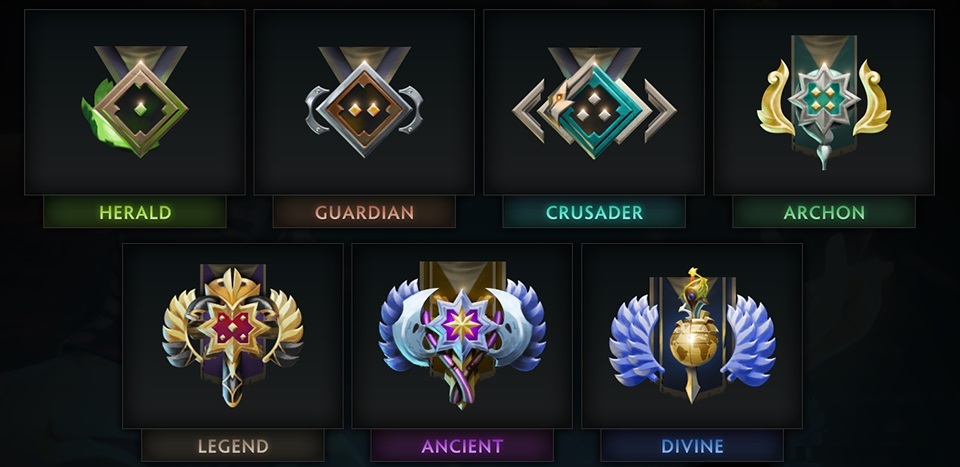
So you’ve made it into the arena of the elite and you’re ready to play your first ranked game of Dota 2. Though you can’t see any rank medals around your profile or a visible MMR (matchmaking rating) score on your screen, you’ll head into your ranked calibration matches with a predetermined rank based on your performance in unranked games.
You don’t have to worry if you haven’t played your best in your unranked matches since each game you win during your calibration matches will significantly boost your hidden rank while losses won’t be that punishing.
You’ll be granted a medal based on your MMR after calibrating. Each rank tier will have five sub-tiers you’ll need to advance through.
Note that the MMR values used to highlight ranges can change anytime based on the rank distribution in your region, but the numbers should still roughly be around the given values.
Herald (0-616 MMR)
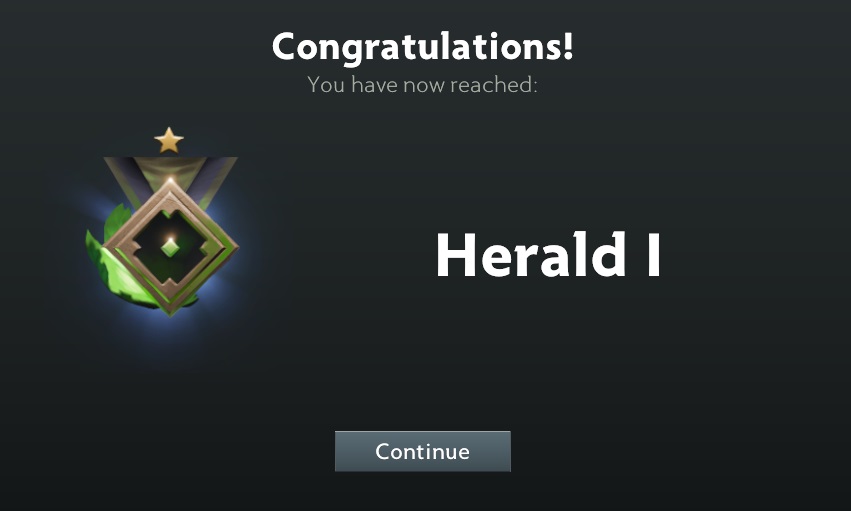
Herald marks the bottom of the barrel when it comes to skill distribution among ranks. The Herald tier will mostly be filled with beginners with little to no MOBA experience.
While getting placed in Herald can be morally crushing for players aiming for the higher ranks, it’s a great place to start and improve yourself. No matter how much you improve yourself in this bracket, you’ll still need a lot of patience while you start your climb out of it.
Focus on what you can do better in each game, and you should move to Guardian before you even know it.
Guardian (616-1386 MMR)

You should feel the games getting more competitive as you get out of Herald since most Guardian players take the time to learn more about Dota 2. Most players will be aware of their in-game duties and try their hardest to win each game.
You’ll need to work on your primary role and understand what you need to do around the map. Perfecting mechanical skills like last hitting creeps to earn gold and taking down objectives to give yourself the required push to the Crusader bracket.
Crusader (1386-2156 MMR)
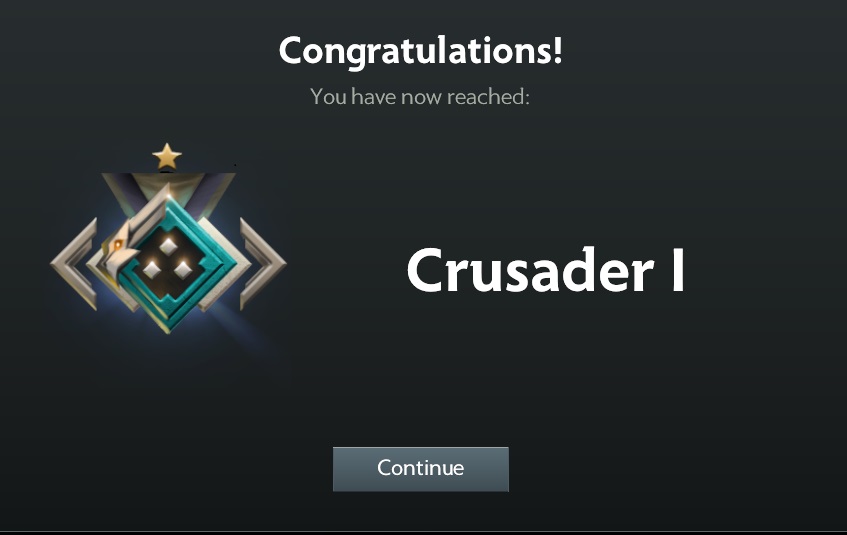
Crusader is the tier where players start studying the game. You’ll notice more people with meta picks and up-to-date item guides, which are vital aspects that can boost someone’s win rate.
The key to moving forward from Crusader to Archon is knowing what works for you and identifying what items you need to buy in different scenarios. Following a single hero guide every game may not cut it anymore since you’ll be against a different set of heroes in almost every match.
Archon (2156-2926 MMR)
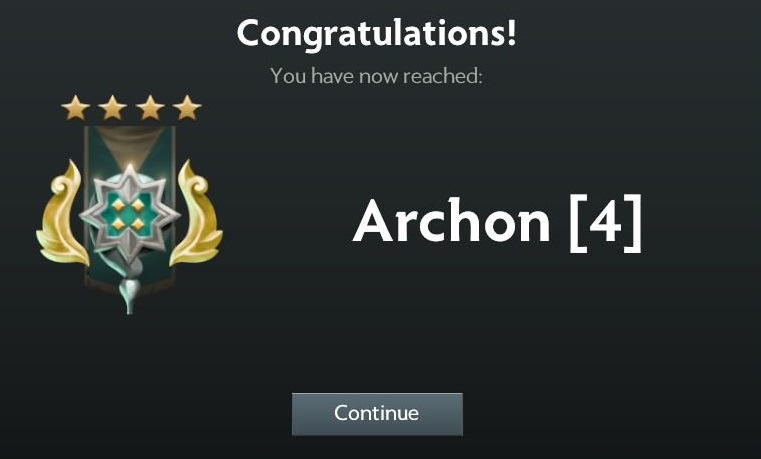
There are more than 100 heroes in Dota 2, and you can only pick five to form the ultimate lineup. Players start picking more synergy heroes in the Archon tier and have a better understanding of when they can start teamfights.
Communicating via voice chat can be the key to move out of this bracket since you’ll need to move as a unit with your team in most matches, and you should start focusing on a role that fits you.
Decide on a few heroes to master for your role so you can perform consistently in every game.
Legend (2310-3696 MMR)

The vision wars start just around when you hit the Legend rank. Players start using more wards and counter-wards to ensure they have better vision than the enemy team, which can be crucial when it comes to deciding the outcome of a game.
One of the best ways to get out of this bracket is starting to replicate what professional and high-level players do. Watch guides on YouTube and live games through Dota 2’s Watch section and try to observe every move that professional players make.
Ancient (3696-4466 MMR)
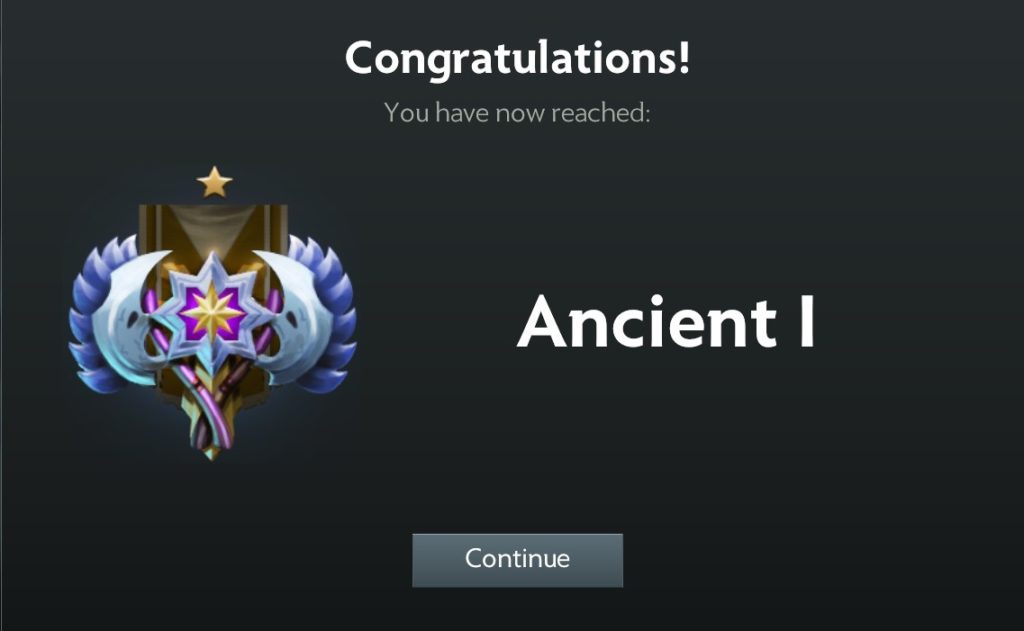
Most Ancient players have the game figured out by now and understand everything there’s to know when it comes to mechanics. While not all of them will be able to play the most mechanically intensive heroes like Meepo and Invoker, most will know what to expect from them when they’re in good hands.
A lot of patience will be required to get out of this bracket since you’ll already know most of the finer details of Dota 2. Work on your communication skills and try to become a leader in games in which your games lack one.
Divine(4466-5420 MMR)

The Divine bracket is the waiting lobby you’ll need to power through before moving on becoming an Immortal. If you’re in this bracket, you may have what it takes to become a top-ranked player, but there may be a couple of slightly bad habits that hold you back.
Most Divine players make the mistake of playing while tilted, which makes them perform poorly. When you aren’t playing your best in this bracket, you become a liability for your team and significantly decrease your chances of winning.
Join each match to have fun and focus on what you can do better and play more efficiently.
Immortal (5420+ MMR)
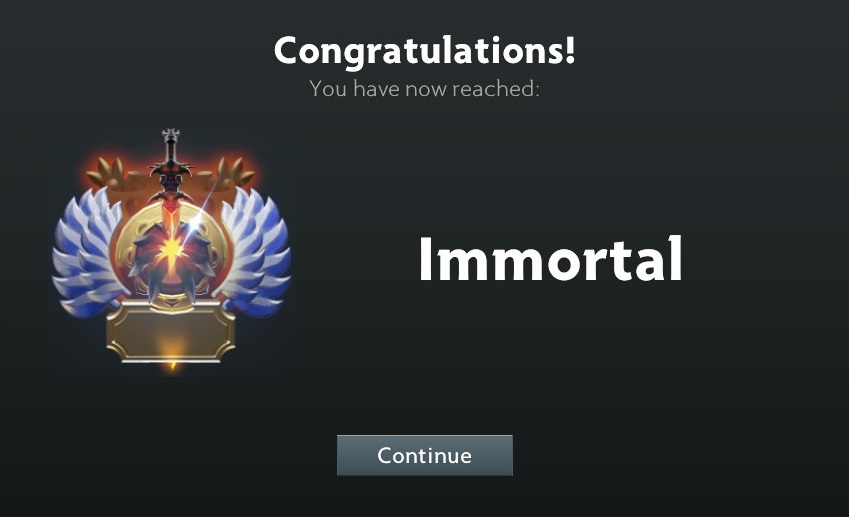
Immortals are the kings of Dota 2. All Immortal players must know every in and out of the game, and each Immortal match has a high potential to be a nail-biter.
You’ll make your way to the regional rankings as you advance through the Immortal bracket and can be scouted in no time.
How does the Immortal Rank work? The leaderboards
Immortal isn’t the end for the aspiring Dota 2 players. Winning games in the Immortal bracket will still grant you MMR, and you’ll start making your way to the regional leaderboards.
Your rank on the leaderboard will start displaying under your rank icon, but you’ll need to play at least one ranked game in 21 days in your region to keep it there. If you don’t meet this requirement, you’ll be removed from the leaderboard due to inactivity but still keep your MMR.
How does the role queue work?
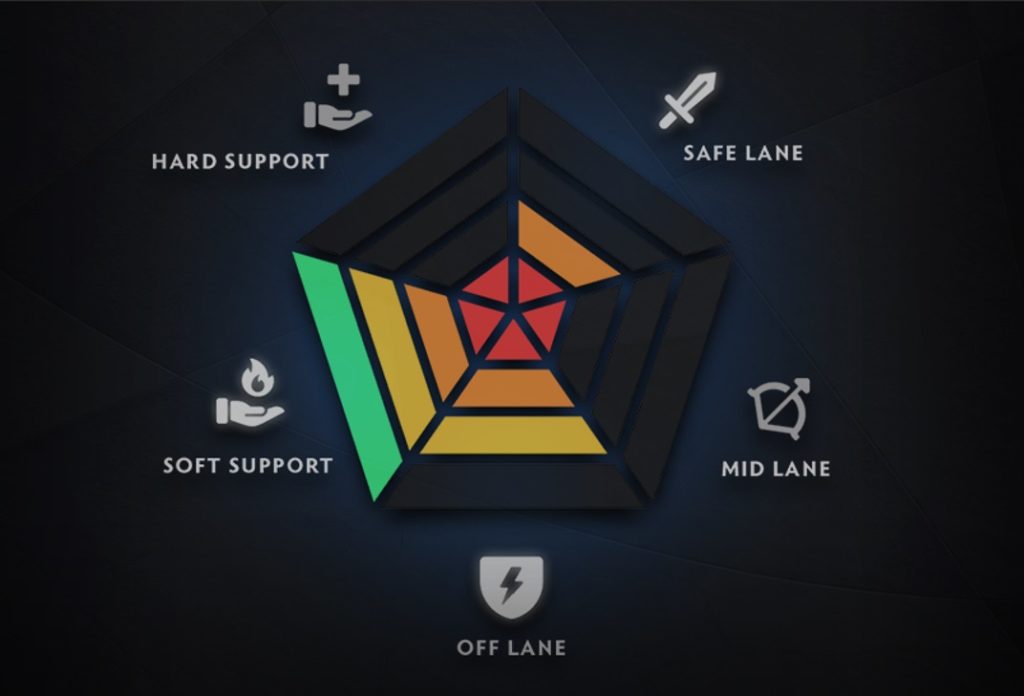 Screengrab via Valve
Screengrab via ValveValve was experimenting with the role queue since 2019 and made a couple of updates to the system in 2020 to make sure it works more consistently. There used to be two separate rankings for core and support roles, but now they’re merged into a single value. Core roles include the safe laners, mid laners, and off-laners while the support role includes soft and hard supports.
While the system works wonders to end the role fights in a game, it significantly increases the queue time for players in higher tiers. The option to use the Classic queue system is also there, however, and you can always turn it on if it takes a long time to find a game in your bracket, and you can play all the roles at an acceptable level.
Role queue will slowly identify what type of players you are and make sure that you don’t get heavily penalized for losing a game that you played a role you aren’t familiar with. While most supports will be able to play their role in almost every game, highly demanded core roles may not always be available, and you may be forced to play a match as a support.
This noble sacrifice will grant you a token that you can use to guarantee your role in your next game, however, and your MMR should decrease slightly less based on your performance. The matchmaker will consider your full MMR while you’re queuing for your best role(s). Queueing for your weaker role(s) will result in the matchmaker placing you into a match at a lower MMR so you won’t feel out of place while playing a role you’re less familiar with.
In general, you’re likely to gain and lose 25-30 MMR based on your match’s outcome, but you can also double it down during seasonal events.
How to identify ranking up and down in Dota 2?
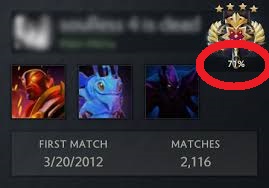
While you’ll always be able to see your current MMR through your profile, it’ll be hard to guess when you’d be ranking up since the MMR ranges continually shift.
Your progress toward the next rank will be hidden until you make it to at least 70 percent, and a percentage meter will appear below your rank to indicate how close you’re to ranking up. It’s impossible to tell how much your next games would affect your percentage meter, but you’ll be able to see it going down and up based on your performance in those games. This means that putting out a godlike performance in a rather bad game can also let you rank up.
What is the rank distribution in Dota 2?
Unlike its competition, Dota 2’s ranked seasons tend to be quite long. Season five has been going on since 2020, and esports outlet Esports Tales took a look at the ranked distribution of Dota 2 as of December 2021.
These statistics show the average Dota 2 player is usually ranked somewhere around Archon One or Two. This means players ranked Legend Four and above make up a small portion of the whole player base.
ncG1vNJzZmicn6mytLzOq6usZpOkunCwzq2YZmpfo7K4v46dpq2ZXWd6rrnRZpinnF2nrq%2B3yKeeZqupqMGmuYyer6mkkZ67prA%3D